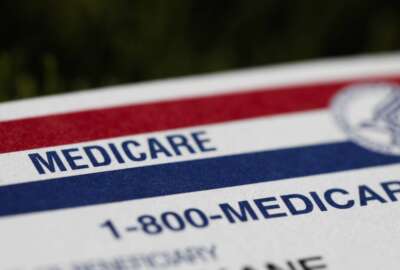A dose of Medicare Part B with your FEHBP? Who gets a COLA in 2012?
David Snell is the retirement benefits expert with NARFE.
wfedstaff | June 4, 2015 12:42 pm
By Jolie Lee
Federal News Radio
Federal retirees might wonder if they should get the extra coverage of Medicare Part B in addition to their coverage under the Federal Employee Health Benefits Plan (FEHBP).
The answer depends on the retirees’ medical needs, said David Snell, retired benefits director of the National Active and Retired Federal Employees, in an interview with Your Turn with Mike Causey.
Unlike Medicare Part A, Part B costs a monthly premium. The standard premium was $115.40 a month in 2011. Part A is automatic, while Part B is voluntary.
If a retiree is spending a lot of out-of-pocket costs under FEHBP, it would be a good idea to get Part B coverage as well, Snell said.
Also, HMO plans in FEHBP are most likely to drop out, “which leaves employees in that HMO scrambling for coverage,” Snell said. Part B would provide a back-up in case that happened, he said.
“If that helps you sleep at night, hey, that’s worth the money,” Snell said.
The cost-of-living adjustment is based on increases in the consumer price index. Federal retirees have not received a COLA since 2008. At that time, the increase was 5.8 percent.
Because the CPI has not risen, retirees did not get a COLA in the past few years. But CSRS employees are expected to get a 3.6 percent COLA starting in 2012, which means FERS employees will get a 2.6 percent increase.
Snell explained the rules for FERS employees’ COLA:
- If the CPI is less than 2 percent, FERS employees get the COLA.
- If the CPI is between 2 and 3 percent, FERS employees get 2 percent.
- If the CPI is more than 3 percent, FERS employees get 1 percent less than the CPI increase.
FERS employees who took a voluntary early retirement are not eligible for a COLA until they reach age 62, Snell said. However, if they have been retired for at least one year before reaching age 62, they will get the full COLA, he said.
Retirees also might wonder when to retire to be eligible for the COLA. The COLA for 2012 is based on the 2011 CPI. A federal employee who retires in 2011 will only get a prorated percentage of the 2012 COLA. For example, if you retire in November, you will get 1/12 of the 3.6 percent COLA, Snell said.
“If they retire in December, they’ll get the full COLA, if there is one, for next year,” he said.
The COLA may mean breaking even after accounting for increases in health premiums. The average increase in 2012 for FEHBP plans is 3.8 percent, the Office of Personnel Management said.
“You’ll get a COLA if you’re due one in your Jan. 1 payments, and watch out, here comes a Feb. 1 payment and that’ll come with the increase in your health benefit premium,” Snell said.
In the first half of Your Turn with Mike Causey, Mike talked to Federal Times editor Steve Watkins about the growing number of high-level GS federal employees.
Copyright © 2025 Federal News Network. All rights reserved. This website is not intended for users located within the European Economic Area.





